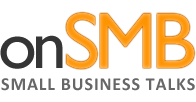As promised, this is “Part Deux” of Designing an Email Newsletter that I promised you in my last post. I’ll remind all of you that this whole series is about writing a “marketing” style email meant to sell a product or service, or to collect leads for later use.
Highlighting methods and supporting media help to seal the deal and evoke a response from the reader while they’re trying to interpret the message you’re communicating. Highlighting your most important selling points will help those who’re easily distracted to focus and absorb your message, while supporting media is important for breaking up the text on the page and keeping the reader in an emotional “buying” state.
If you haven’t read Part 1 yet, please take a look before continuing.
Also see this Forbes article featuring Laura Ries talking about how important visual marketing is to creating and maintaining your brand.
Part II
Highlighting Methods:
Remember back in school when you wanted to make important information in your textbook stand out? – Or maybe you were the type who grudgingly despised the “Nerds” in your class who did? Highlighting the text in your email helps readers zero in on your point. It also helps with busy readers who just want to scan what you’ve sent quickly, to see if anything piques their interest.
- Use bold carefully throughout the email text. One has to be careful, because too much can be discombobulating. Bold your title and headings for sure. Any other words that are bolded should be things like important terminology you want them to ingest, and specific “calls to action” such as Read this, or Sign up.
- Italics are your friend when trying to reach an audience. Italics stand out on the page just as well as their bold counterparts, but do so in a slightly more subtle, less aggressive way. Use italics to highlight quotes (“To be, or not to be…”), words that might not make sense (discombobulated), and product names (GMC Envoy). There are many other uses, but use them somewhat sparingly (see WikiHow).
- Underlining practises should be used ultra-sparingly. They follow the same rules as bold and italics do, but too much or not enough of it and your viewer will end up confused; however not using any at all is just fine. If you’re going to underline one word or phrase in an email, you’ll have to find other areas to underline on the page that relate to each other, to maintain a consistent visual experience. Read Part 1 of this post again and notice how I underlined specific points I wanted you to absorb, and then stayed consistent with their use throughout the remainder of the post – this is great for capturing the attention of “scanners” who don’t read all of your text.
- Other highlighting methods that I’m not going to go into detail about right now include “quotations”, (brackets), colors, and hyperlink usage. If you want me to go into more detail about them in a future post, comment down below.
Supporting Media
Supporting media adds the “dazzle” to the text in your email.
- Photos: There are a numerous amount of niches where photos are needed to get your prospect excited. I thought about putting a huge list here, but most of us understand the value of a good photo by now. Just look at the success of Pinterest. Photos should accompany related text; not be included arbitrarily for decorative effect. If your business sells a memory-enhancement product, you might choose to put a pic of a confused person scratching their head – directly beside a section of text in your email describing the frustration one feels when they can’t remember something.
- Videos: This one was worth mentioning, but I’m not going to go into a lot of detail about it, because I’m anything but an expert on the topic. We all know that people like videos even more than they do pictures, and many marketers are using video selling formats in place of text-based media nowadays. For the most part, supporting videos should appear at the top after a brief introduction, to get the prospect excited. You should really split-test several emails with different placements to find out what works best for your product. Also check similar products in your industry to see what’s working for others.
- Graphics: This is another one that needed to be mentioned, but it’s such an expansive topic that it deserves it’s own (LONG) post. You do need to include lots of supporting graphics when selling almost anything. I don’t recommend creating your own graphics, unless you’re a designer, and you definitely don’t want to scoop them off Google and use them to sell your product (we all understand the concept of copyrighted material right?) Include graphics like charts, screenshots, animations, etc – in the same way you would include photos. Always put your graphics right before or after applicable text.
Also see this interesting article from copyblogger.com: 7 Email Publishers Profiting From the Inbox


